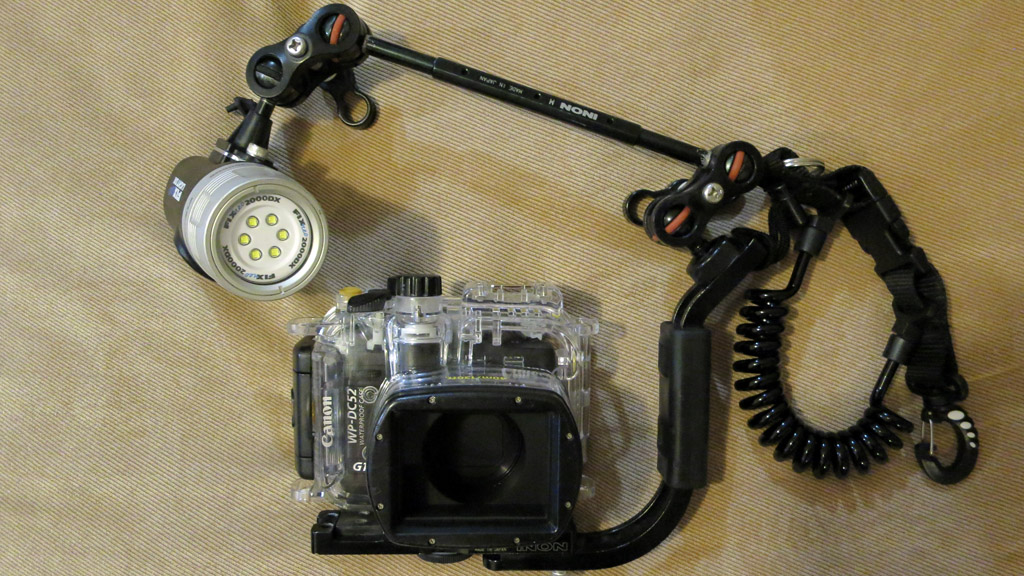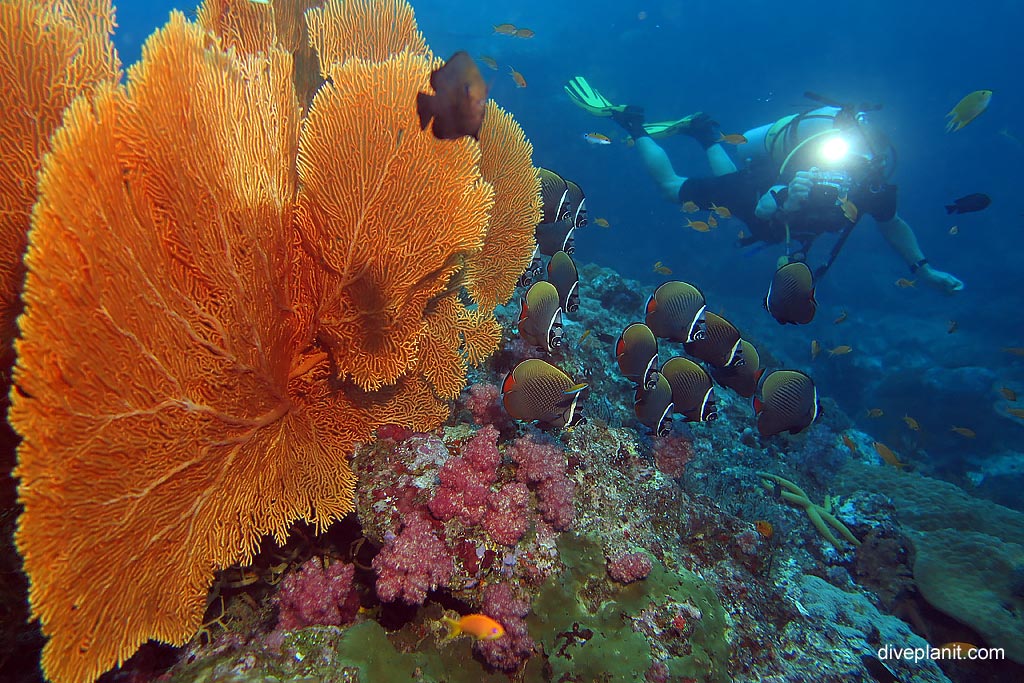Q1: Explain how you got into underwater photography in the first place.
Simon Mallender: “It was a trip to Palau that made me decide that a camera was an essential part of my diving gear. How can you spend 40 minutes with barrelling mantas and not want take that home to show everyone? Or sit and watch a turtle for 15 minutes without wanting to show people that they are still there and we don’t need an ocean full of plastic bags. I had a GoPro 2 back then, without a light and I couldn’t compare what I’d seen with my own eyes to the grainy video I’d captured, so I decided to get a ‘more serious’ camera and light.”
Q2: What is your favourite subject matter? What attracts you to it?
I like big stuff – moving – it’s more dramatic. Rays, sharks, turtles – I’ve yet to dive with seals – even Groper – something that interacts with a diver – or at least has eyes big enough to look at you. So I’m a very opportunistic videographer (mainly) – camera and light are always on standby. I am constantly looking around, and under ledges and overhangs. Sometimes, if you just hang loose in one spot – the action comes to you. Like these turtles in the Gili Islands.
Q3: What equipment do you use now? Why does it suit your purpose so well?
I’m still a happy-snapper: I use a Canon G16 in a Canon DC52 Case on an Inon mount. I use the Fish Scene setting on auto (yes you may laugh, even snigger!), and I have a Neofix 2000 video light mounted on a single arm as I shoot as much video as take photos. The great thing about the Neofix is that you can switch the light rapidly from 25 to 50 to 75 to 100% in three clicks. That’s from a bit of background lighting to 2,000 lumens – enough to turn a night dive into a day dive – pretty quickly. The advantage of the setup is that you can move the light far away or really close to the camera, and shoot and change settings single-handedly.
Q4: Are you willing to give away one secret, or one top tip?
If you want good video, and by that I mean something that you’d be happy to have on your vimeo channel, (we don’t work for the BBC afterall), my top tip would be to invest as much in the lighting as the camera – there’s a limit to what you can do in post production. Having said that, I run all my photos through Photoshop and I use Adobe’s Premiere Pro to produce video.
Q5: what do you consider your best ever shot?
The most serendipitous clip I captured was in Christmas Island. It was in the middle of the red-crab migration and the chance of capturing a glimpse of a whale shark was higher than usual. Hama, the dive guide, would sort of hang out in the blue a little, and he had this shaker that he’d shake if anything interesting was coming by. Well, we heard this shaking – big shaking – so we all swam directly out to the blue. Scott Portelli got there first, and this whale shark just swam up to him smiled and swam around him and away. The framing was perfect – any closer and I’d have had a screen full of sharkskin, any further away and the light wouldn’t have penetrated. I couldn’t have asked for a better performance – that whale shark was a pro!
(Thanks to 7Seas, Sea Bees, Wet n Dry and Dive DownBelow for putting me in the right spot at the right time).
If you want to share your rig and why it works for you, just contact us.





We’d love you to share a post about your UW camera gear! If you’d like to be featured on our blog and help others get started on their underwater photography journey, please email me at deborah@diveplanit.com with answers to these five questions:
Q1: tell us why/how you got into (underwater) photography in the first place. Maybe include reference to your first camera.
Q2: What is your favourite subject matter?
Q3: What equipment do you use now? Why does it suit your purpose so well?
Q4: Are you willing to give away one secret, or one top tip – whether it’s for the diver who’s just starting out, or someone who wants to get to a point where they could enter competitions?
Q5: what do you consider your best ever shot? Tell us how you got that one.
Plus a few pix of you and your gear, and any great photos you want to share.